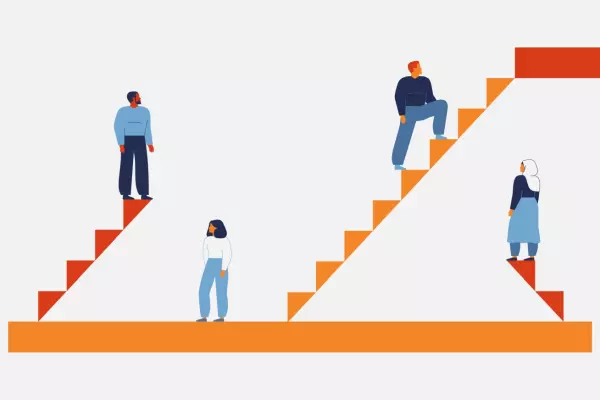The Australian government is counting the cost of a disastrous attempt to use technology to make its social welfare system fairer and more efficient.
It has just settled Australia’s largest class-action lawsuit to date over its automated debt recovery system, which was supposed to save taxpayers A$1.7 billion over five years but will end up costing them at least A$1.2 billion instead.
It probably seemed like a great idea back in 2015 when the scheme was devised. As occurs with our own Inland Revenue Department and the Ministry of Social Development, Australia has had a data-matching arrangement in place between the Australian Tax Office and Services Australia (formerly the Department of Human Services) since the early 1990s.
It is used to compare income reported to the ATO and DHS and identify any discrepancies.
That’s fair enough.
Some social welfare beneficiaries unwittingly claim a benefit when they shouldn’t.
Others deliberately understate their earnings, which amounts to benefit fraud.
What’s different between the two countries is their diverging approaches to handling what amounts to a very sensitive issue. From 2011, Australia began a determined push to automate the system and reduce human oversight of it.
This would claw back money from beneficiaries who were overpaid and reduce administration costs - a win-win for the taxpayer.
Previously, a DHS officer would investigate a discrepancy thrown up by the data-matching and approach an individual’s employer to verify income details. Under the new system, the onus shifted to the individual receiving payments from the Centrelink agency to provide the information.
With the automated system, the government was now able to go back through several years of data and look for discrepancies.
As a result, the Australian Senate later reported - after the wheels had come off the scheme - that the number of debt interventions increased from 20,000 in 2015/16 to around 800,000 in 2016/17.
Bad debts
Thousands of past and present social welfare beneficiaries began receiving letters demanding outstanding debts be repaid.
The impact this had on people soon became apparent as they disputed the debts and, in some cases, took legal action to have them overturned.
Politicians were flooded with complaints from upset constituents.
Not only was it a heavy-handed way to deal with a vulnerable group of people, the robo debt system was also totting up the supposed overpayment figures inaccurately.
It used an income averaging equation, which would have worked just fine if individuals were paid the same income every fortnight.
But life isn’t as tidy as that for many people receiving social welfare payments.
Some are students who then move into full-time employment in the course of a financial year.
Some work part-time while studying, or move between different jobs, or require a sickness benefit for a period or take unpaid leave.
The upshot was that the automated system wasn’t designed to deal with the complexity of individuals’ social welfare scenarios in Australia and hundreds of thousands of people had “debts” miscalculated.
Ultimately, the income averaging system was declared unlawful by the Federal Court and the government late last year said it would have to manually recalculate 500,000 individual debts.
Australia’s robo debt experiment ends in failure then: a failure of technology implementation, but also of government policy.
While the financial cost of that failure can be quantified, the personal toll on people stressed out at the prospect of having to clear big debts with Centrelink is harder to tally.
The human approach
Thankfully, our own government hasn’t taken the automated hands-off approach to policing MSD’s social welfare payments.
Our agencies do the same legally authorised data-matching exercise, but case managers control the process and there has been no wholesale effort to automate efforts to chase beneficiaries for past debts.
Not that we don’t have a problem with social welfare debt.
According to the Welfare Expert Advisory Group, as of June 2018, a total of $1.53 billion was owed to MSD. The majority of that, $769 million, was in overpayments, with $211 million in fraud-related overpayments.
The situation will be exacerbated by the economic fallout of the pandemic.
The Aussie experience should give our own government officials pause when considering how to use software and algorithms to help whittle down the debt pile although, done properly, automation can reap great rewards when used sensibly in government.
As part of the Inland Revenue Department’s business transformation programme, it has moved to automatically calculate tax positions. It did that by gaining greater access to accounting and payroll providers’ systems so it could gather tax-related data more regularly. It means that many people don’t have to file a tax return anymore or apply for a tax refund if they’ve overpaid.
As a result, for the 2019 tax year, 1.3 million people were automatically issued with tax refunds totalling $572 million.
The automated system and greater use of digital filing of returns are estimated to save each small and medium-sized business nine hours of tax-related work a year.
Between 2017 and 2019, that equated to savings of $280 million.
These are the sort of wins we should expect from automation projects done well.
But trust in government is fragile.
Australia has an uphill battle to regain the trust of social welfare beneficiaries as it continues its compliance efforts. We need to make sure we don’t make the same mistakes in pursuing our own.
Contact Peter Griffin with feedback or story ideas at [email protected] and follow him @petergnz.













